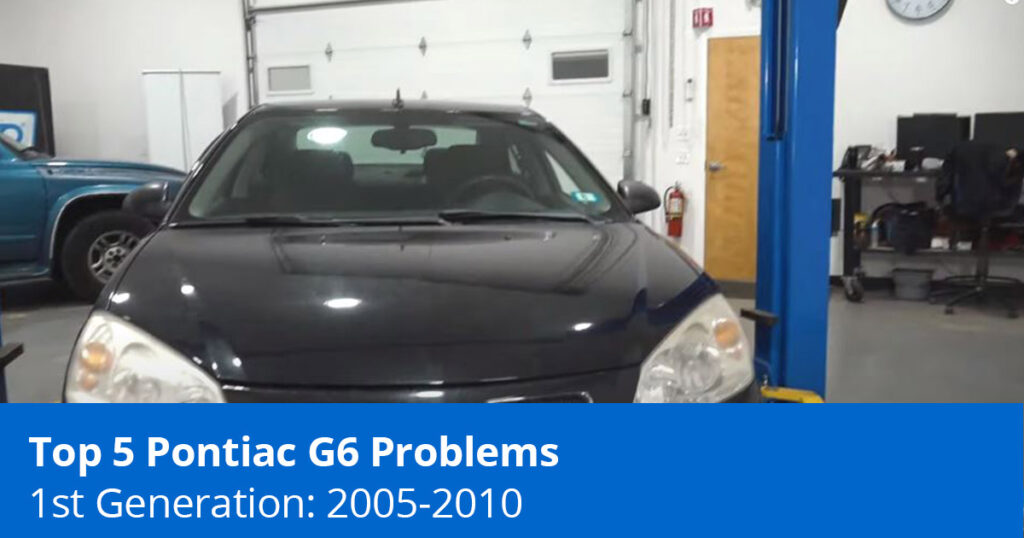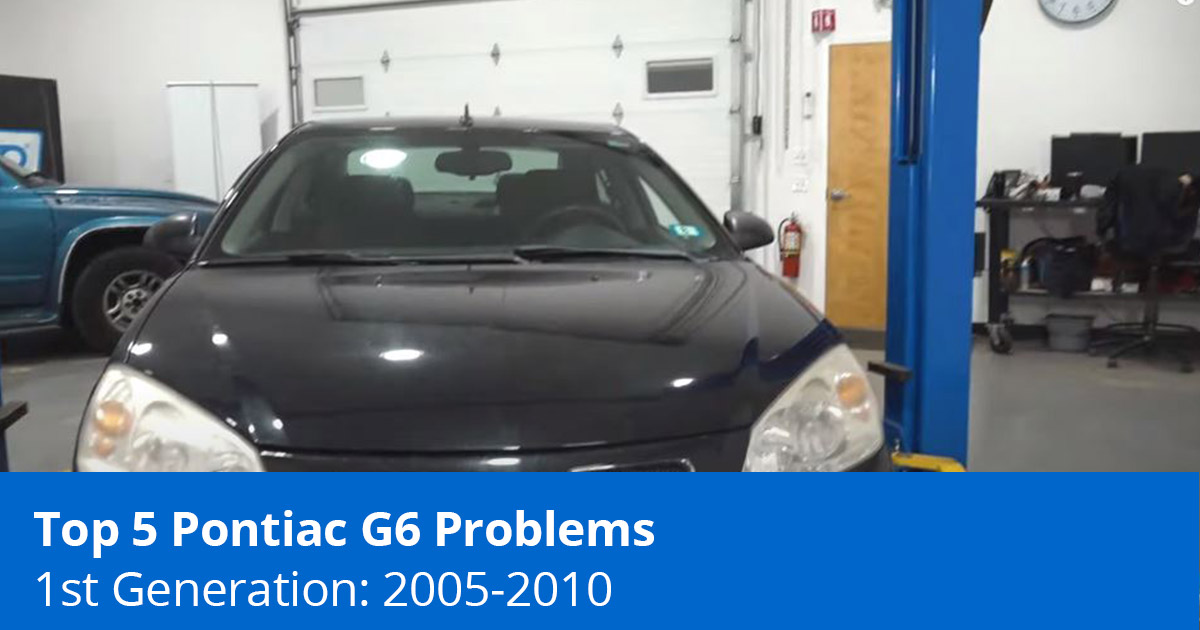
The Pontiac G6 was introduced for the 2005 model year as a replacement for the Pontiac Grand Am. While its name represents the Grand Am’s 6th generation, the G6 is considered its own model. Only one generation of the G6 existed and it discontinued when the Pontiac brand dissolved in 2010. This post covers the top 5 Pontiac G6 problems of the 1st and only generation, years 2005 to 2010.

Common 1st Gen Pontiac G6 Problems (2005 to 2010)
1. VVT Solenoid Failure
Symptoms of VVT Solenoid Failure
- Vehicle runs rough
- Sometimes the car stalls
- Check engine light
Causes of VVT Solenoid Failure
The VVT solenoid is part of the variable valve timing. Sometimes engine oil can clog the VVT solenoid, which affects its performance.
How to Fix and Prevent VVT Solenoid Problems on the 2005 to 2010 Pontiac G6
Change and Check the Engine Oil Regularly
Change the oil at the recommended intervals with the appropriate fluid and check the engine oil fluid level and condition regularly to help prevent VVT solenoid failure.
Replace the VVT Solenoids
If the VVT solenoids have failed, replace them.
2. Electric Power Steering Failure
Symptoms of Faulty Electric Power Steering
- Sometimes the electric power steering doesn’t work
- Check engine light for a code with the power steering system
Causes of Power Steering Failure
The G6’s steering column has a sensor built into it and an electric motor attached. Sometimes the sensor fails, and sometimes the electric motor fails.
How to Fix Power Steering Problems on the 1st Gen G6
If the sensor has failed, replace the steering column. If the electric motor has failed, replace it.
3. BCM Connector Issues
Symptoms of Faulty BCM Connector Issues
- Tail lights are not working
- Odd electrical issues, like dash lights turning on and off
Causes of BCM Connector Problems on the 1st Gen Pontiac G6
The BCM is located behind the side trim panel on the passenger side of the center console. It tends to fail on the 1st gen G6.
How to Fix BCM Connector Problems
How to Fix BCM Connector Problems that Cause Electrical Issues on the 1st Gen Pontiac G6
- Disconnect the Battery
Disconnect the negative battery terminal connector first. Then disconnect the positive battery terminal connector.
- Disconnect the BCM’s Electrical Connectors
Remove the side trim panel on the passenger side of the center console. Disconnect the BCM’s electrical connectors.
- Reconnect the BCM’s Electrical Connectors
Disconnecting and reconnecting the BCM’s electrical connectors should fix this problem.
- Optional: Apply Special Dielectric Grease for Low Voltage Applications to the BCM’s Electrical Connectors
To prevent this issue from reoccurring, apply special dielectric grease that works on low voltage applications to the connector. Regular dielectric grease will not help prevent this issue.
4. Turn Signal Switch
Symptoms of Turn Signal Switch
- Turn signal switch doesn’t disengage after turning the steering wheel.
- Turn signal doesn’t engage or works when not engaged
How to Fix a Turn Signal Switch
Replace the turn signal stalk.
5. Front Hub Bearings
Symptoms of Bad Front Hub Bearings
- Loud groaning noise that changes when turning the wheel
Causes of Bad Front Hub Bearings on the 2005 to 2010 Pontiac G6
Groaning or whirring noises from the wheel are usually from a worn wheel hub on the 1st gen Pontiac G6.
How to Fix Bad Front Hub Bearings

Grab and wiggle the wheel from the 12 and 6 o’clock positions. If you feel excessive play, it’s probably from a bad hub bearing.
Grab the coil spring and spin the wheel. If you feel vibrations on the coil spring, that is an indicator of which side of the car has the faulty hub bearing.
Complete Repairs on the Pontiac G6 Yourself
Learn how to do a number of common repairs on the Pontiac G6, like the control arms, headlights and bulbs, and the brakes, with 1A Auto’s how-to videos.
1st Generation Pontiac G6 Problems
Related Content
- Got Wheel Wobble? Test for a Bad or Noisy Wheel Bearing
- Wheel Bearings & Wheel Hubs 101: What They Are And How They Fail
- Bad Wheel Bearing Symptoms
Shop Pontiac G6 Parts
- Engine & Engine Management
- Fuel & Emissions
- Brakes & Wheel Bearing
- Steering & Suspension
- Headlights & Lighting

